Current literature suggests that GI disturbances are common complaints amongst runners. Studies of both the general population and the running community have found that women report more GI symptoms than men; diverse theories for gender-related differences have been proposed, with psychosocial factors and fluctuating female sex hormones being frequently explored.
Looking specifically at female runners, it is thought that over 80% have abnormal menstrual cycles and several studies have explored the impact of chronic energy insufficiency on menstrual status.
So it was against this backdrop that I chose to research specific dietary behaviours amongst a group of symptomatic female runners. Details of the actual symptoms experienced were also analysed and the study found that, whilst respondents presented with a range of symptoms, loose stools and/or diarrhoea were the most commonly reported, followed by alternating diarrhoea with constipation.
Key Findings
The findings of my study suggest that a low intake of dietary protein is associated with an increased incidence of diarrhoea and bloody stools. A low intake of vegetables, a high intake of fruit and calorie restriction combined with high mileage were also found to correlate with an increased incidence of GI symptoms.
The findings also indicated that 75% of respondents regularly restrict their intake of high fat foods and protein sources with a higher fat content (e.g. meat, cheese, nuts, seeds and oily fish). Respondents with the lowest intake of dietary fat from all main sources appear more likely to experience diarrhoea/loose stools.
The protective role of Essential Fatty Acids (EFAs) found in nuts, seeds and fish is well documented, but, given that nuts, seeds and fish are also sources of dietary protein, it cannot be concluded from this study whether an increase in symptom severity can be attributed to a low intake of EFAs, a lack of protein or both.
Consistent with other studies, the findings suggest that sub optimal hydration and/or a high usage of sports gels also increase the likelihood of GI disturbance.
The study found some correlation between higher mileage and a greater incidence of diarrhoea and bloody stools. However, a low calorie intake combined with a high weekly mileage appeared to greatly increase the incidence of diarrhoea and bloody stools. (Obviously a higher mileage means greater energy and nutrient requirements and so a low calorie intake combined with high mileage will increase the likelihood of both energy and nutrient deficiencies.)
A finding specific to this study is that a high percentage of total calorie intake from sugar correlates with a significantly increased incidence of diarrhoea and bloody stools. Looking at calorie intake alongside the stated mileage of the participants suggests that chronic calorie deficiency is a widespread problem.
Over time this behaviour is likely to impact health, including precipitating triad status. Further exploration of the potential effects of low levels of ovarian hormones (as a result of chronic energy deficiency) on GI symptoms is an area worth further investigation to ascertain if this might be another reason why women runners appear to suffer from more GI symptoms more than their male counterparts.



